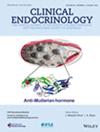Lower creatinine to cystatin C ratio is associated with an increased risk of MASLD: A cross-sectional and prospective study of 368,634 UK Biobank participants
Abstract
Objective
Metabolic dysfunction-associated steatotic liver disease (MASLD) affects many populations, and screening out the high-risk populations at an early stage is a challenge. As a sarcopenia index, the relationship between creatinine to cystatin C ratio (CCR) and MASLD remains unclear. This cross-sectional, prospective study aimed to explore the relationship between CCR and MASLD. Design Firstly, explored the correlation between CCR and MASLD in cross-sectional analyses. Then excluded the population with baseeline diagnosis of MASLD and analyzed the association with baseline CCR levels and the onset of MASLD in the population with available follow-up data. Univariate and multivariate logistic regression analyses were used to calculate odds ratios (ORs) to evaluate the association between CCR levels and MASLD.
Patients and Measurements
This study included 368,634 participants from the UK Biobank for cross-sectional and prospective analyses. The demographic characteristics and laboratory measurements of all participants were obtained from the UK Biobank. MASLD was diagnosed according to the multi-society consensus nomenclature. Hepatic steatosis was defined as FLI ≥60.
Results
We grouped the study participants according to CCR tertiles. In cross-sectional analyses, participants in CCR tertile 1 had the highest MASLD risk (OR: 1.070, 95% CI: 1.053−1.088, p < .001). And the similar association was observed in the prospective analyses (CCR tertile 1 OR: 1.340, 95% CI: 1.077−1.660, p = .009; CCR tertile 2 OR: 1.217, 95% CI: 1.021−1.450, p = .029, respectively). After stratification by gender, the significant association between CCR and the onset of MASLD was only observed in males (CCR tertile 1 OR: 1.639, 95% CI: 1.160−2.317, p = .005; CCR tertile 2 OR: 1.322, 95% CI: 1.073−1.628, p = .005, respectively).
Conclusion
Our results indicated that lower CCR was significantly associated with higher risk of MASLD, based on which predictive models can be developed to screen populations at high risk of developing MASLD.

 求助内容:
求助内容: 应助结果提醒方式:
应助结果提醒方式:


